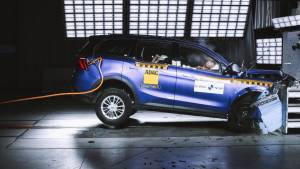2021 Mahindra XUV700 first drive review
When a glass drops, you hear it shatter. When you drop metal, you hear a din. But on August 15, when the assembled audiences jaw dropped, all you could hear was silence and four-letter expletive mouthed out silently before the resonance of hands coming together! Boom! In spectacular fashion, Mahindra's incredible price announcement for the XUV700 left everyone spellbound.
At the outset, Mahindra has priced the XUV700 in a band that makes it irresistible. It begins at Rs 11.99 lakh for the base variant and with the mid variant that has almost everything you'd need priced at Rs 14.9 lakh (all prices announced are for the 5-seat variants), the XUV700 is set to be a winner. It sets the cat amongst the pigeons, and the question most asked here on would be why are SUVs like the Alcazar and the Hector priced as high as they are. It would even draw comparisons to the Creta, the Seltos, the Kushaq, the Taigun even! Because whichever way you look at it, neither has the kind of feature sets nor the space and presence of the XUV700!
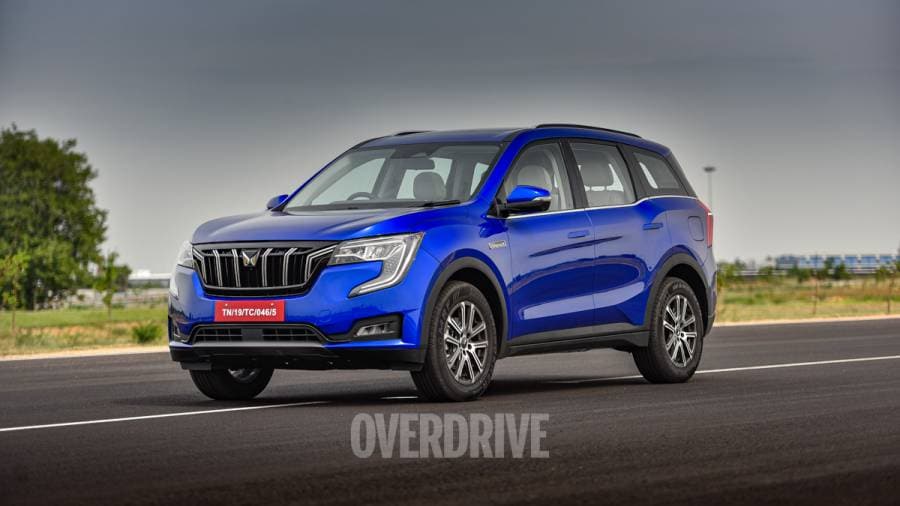
2021 Mahindra XUV700: A New Platform
The Mahindra XUV700 sits on a new platform, which is largely a significant evolution of the XUV500 platform that will underpin not just the XUV700, but a few more of the 23 vehicles Mahindra intends to get out in the market by 2026. It is a front-wheel driven platform, but also makes provision for all-wheel-drive drivetrains. In the XUV700 the intent was to improve stability, ride quality and give it the dynamics that would offset its high centre of gravity and inherent roll and pitch.
What I do like is that visibly the XUV700 does not look much larger than the XUV500. A close look at the dimensions in fact will show you as much. The XUV700 is just a little over 100mm longer than the XUV500, they share the same width but the former is shorter now at 1,755mm. The wheelbase has also increased by 50mm which provides more room within the cabin as the axles now sit further apart. Ride height still stays an impressive 200mm. The interesting bit is that Mahindra has also worked significantly on weight reduction, keeping kerb weight to just 1,620 kg. That is almost 100-odd kg lighter than the XUV500 which brings significant gains in ride, dynamics and even efficiency and performance!
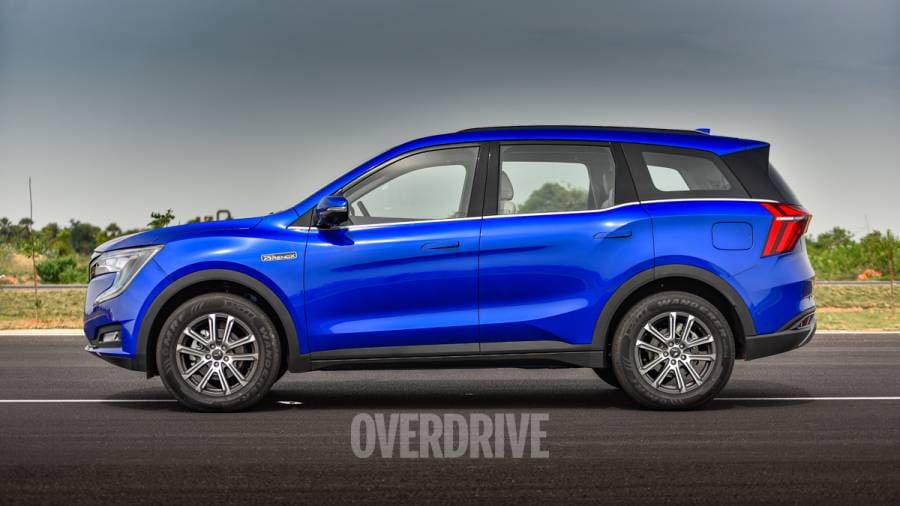

To achieve this Mahindra employed a ring structure chassis design which centres the strength and rigidity around key circular areas in the frame, reducing body flex. Additional high strength steels and ultra-high-strength steels brought in much-needed rigidity and torsional stiffness. The engineers then further added a multi-link independent rear suspension setup, with frequency selective dampers (FSD) all around, something you don't get at all in this segment of vehicle. It is expensive equipment, but brings in quicker responses and improved control to the XUV700.
And finally, they added in all-wheel drive, using a BorgWarner transfer case to deliver torque to all four wheels at the click of a button. This is not an on-demand system, you have to select all-wheel drive, and when it's switched off, power is shifted back to the front wheels. The torque split between front and rear wheels is 60:40 with the bias towards the front, and this isn't variable, its stays like that throughout. While this does give it some moderate off-road abilities, you should exercise caution before assuming you could also do all that you will soon see on social media influencers handles. Too many will get caught out and you might not get what you expected. Instead where you should use the AWD system is in the twisties, in slippery conditions during the monsoons or winter breaks into the lower reaches of the Himalayas, or hard-packed dirt trails without any serious obstacles to surmount. In these conditions, the AWD system will give you the confidence you'd like to have to enjoy the XUV700.
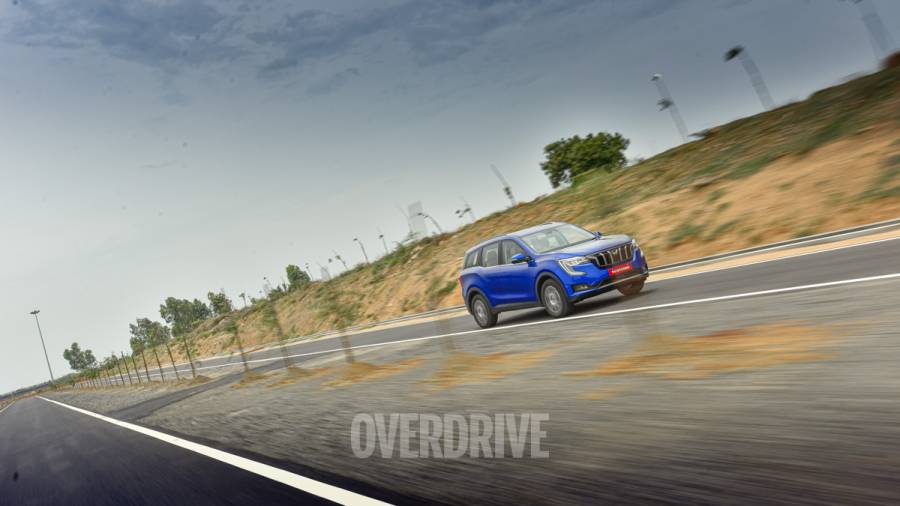
On the ride comfort front, the XUV700 feels firm. On the road sections, driving the XUV700 from Mahindra's research valley to their new proving ground further outside the city limits, the XUV700 felt taut and rich. It has a fairly European style of ride, solid without crashing into surface aberrations and comfortable enough to make any journey tireless. You can further attribute the ride quality to the 235/60 18-inch tyres on the AX7 variant we were driving. However, there would be minor depreciation on the lower variants that would come with the 17-inch wheels and tyres with a 235/65 section tyre.
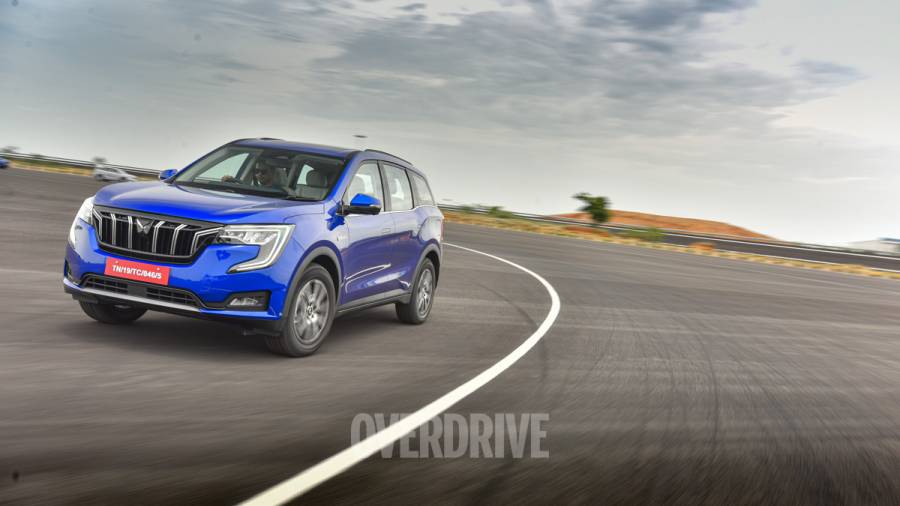
The multi-link setup with the FSDs also help isolate and damp shocks at each wheel, so you don't get the jumpiness at the rear while the front also stays well connected with the road. There is an acceptable amount of body roll, while pitch under hard braking is strictly kept under check unlike the previous generation of Mahindra SUVs. The steering has also been worked on, though in urban areas I'd have liked to see a little more weight. It feels very light within the city, which most consumers would enjoy, though at highways speeds it weighs up significantly to keep things positive.
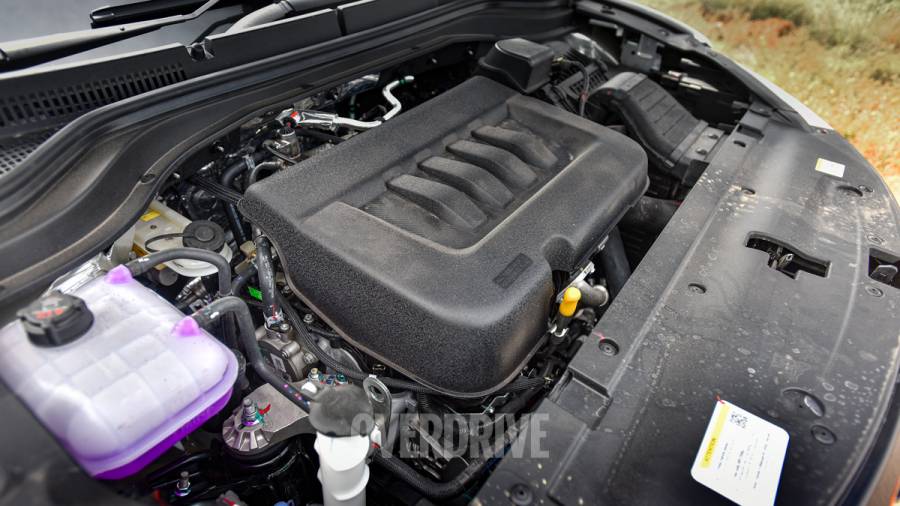
2021 Mahindra XUV700: New Powertrains
Mahindra's much-appreciated range of diesel and petrol engines which we first saw on the Thar exactly a year ago, continues to serve on the XUV700 as well. The turbocharged GDI and CRDi engines however make significantly more power and torque. On the 2.0-litre mStallion petrol you get 200Ps of max power with 380Nm of max torque. That is a substantial gain and given that its kerb weight is just 1,620kgs, that gives it a pretty decent power to weight ratio. The petrol also makes a compelling case for itself because it is more refined and you have both strong power and torque ratings that lend it strong forward momentum. The turbocharger kicks in pretty early, just a shade under 1,700rpm allowing max torque to step in as early as 1750rpm. So drivability is not a concern, and you get a smooth but urgent kick every time you step on the throttle. 200kmph by the way comes with little stress to this engine!
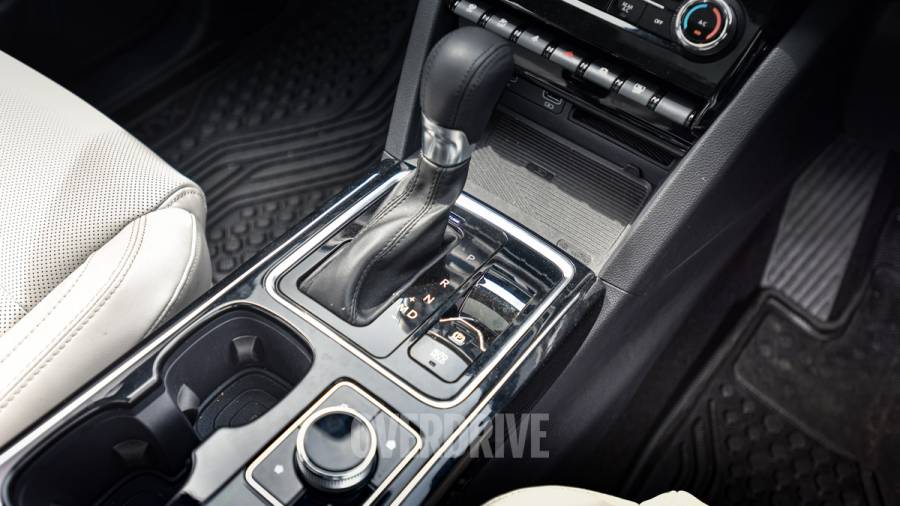
We didn't get the manual transmission option but the automatic is a standard 6-speed Aisin slushbox with a manual mode. Shift quality for a standard torque convertor is quick, though having paddle shifters behind the steering wheel would have made a world of difference to the driving experience. I'd assume this has not been offered to keep costs in check. The manual modes on the automatic also work quite well if you do intend to drive off-road and need to hold it in a specific gear. All you have to do is roll to a complete stop, shift into manual mode, slip it into 1st gear and then proceed. Without coming to a complete halt, the transmission still adopts automatic mode and will shift into second gear.
The second option is the older but evolved 2.2-litre mHawk diesel, and it comes in two states of tune. You have a 155PS variant that will power the lower variants and the 185PS motor that will be found on the variants higher up the order. The 2.2-litre mHawk also delivers 360 Nm of torque but it's the 185PS motor that is the star of the show. Coupled to the manual transmission it delivers 420Nm of torque, but with the automatic, it's been tweaked to deliver 450 Nm. This is also because the diesel AT is the only variant to come with an all-wheel drive.
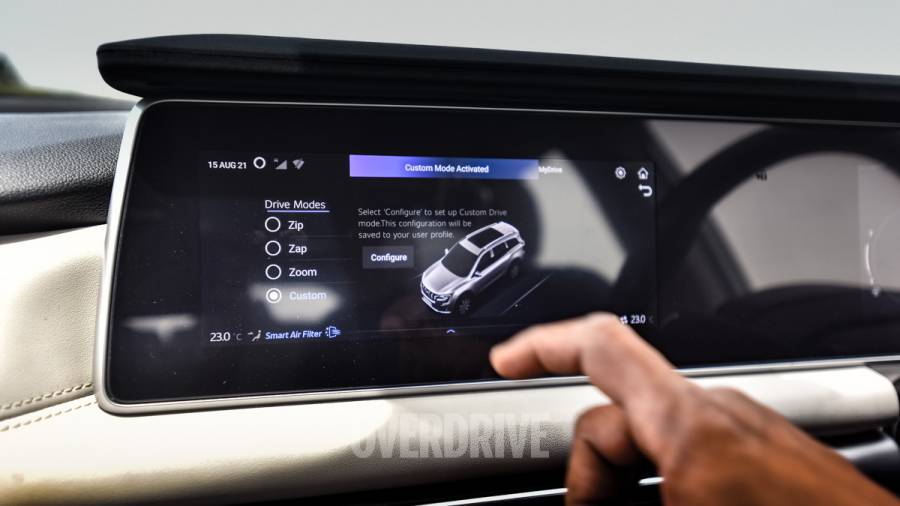
The diesel is punchy, but it's also noisy though you don't get the conventional diesel vibes. Above 2,000rpm the motor becomes quite audible, increasing in volume as you climb higher up the rev band. Noise-cancelling in the petrol is brilliant, the natural tendency of the petrol is quiet performance, and dialling in the sound deadening makes the cabin a very quiet place to be in. There is barely any perceptible road noise as well when on the move.
Another big plus is the drive modes which rather childishly are called Zip, Zap and Zoom. Ignore the nomenclature, what the modes do is alter a variety of deliverables depending on the driving conditions. These range from efficiency to sport modes, with an additional individual preference mode thrown in that, allows you to alter the state of the engine, steering, brakes, climate etc. This by the way is a feature, especially the individual mode you get only in the Mercs and BMWs of the world, so at this price it's quite unique and highly appreciated.
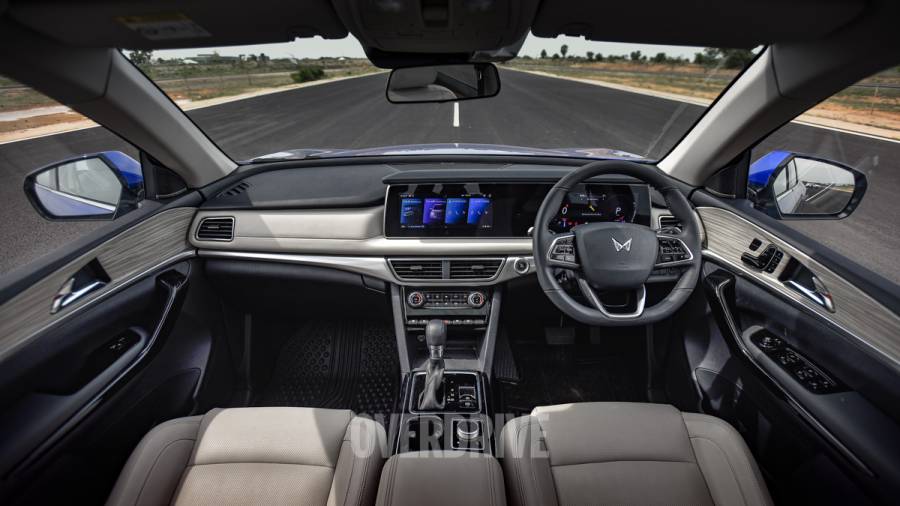
2021 Mahindra XUV700: Features
The third large area that Mahindra has worked on is the feature set that comes along with the various variants. Taking a cue from their Korean contemporaries, Mahindra has made a strong attempt at squeezing in everything they could into the XUV700, and then filling in the gaps some more. Several of these features like ADAS are something only the Chinese manufacturers could offer in their cars at affordable price points or luxury car makers in some of their high-end offerings. ADAS though works brilliantly sending off warning signs that you're either getting too close to the vehicle ahead or switching lanes without indicating or that another vehicle is too close in your blind spot via steering vibration or audio outputs. And it works quite well, for a car that is priced in this segment. Add the multitude of airbags, stability programs, traction management systems, hill assist etc and you have a safety blanket that is just immense. I expect Mahindra will strike up another major rating at the GlobalNCAP.
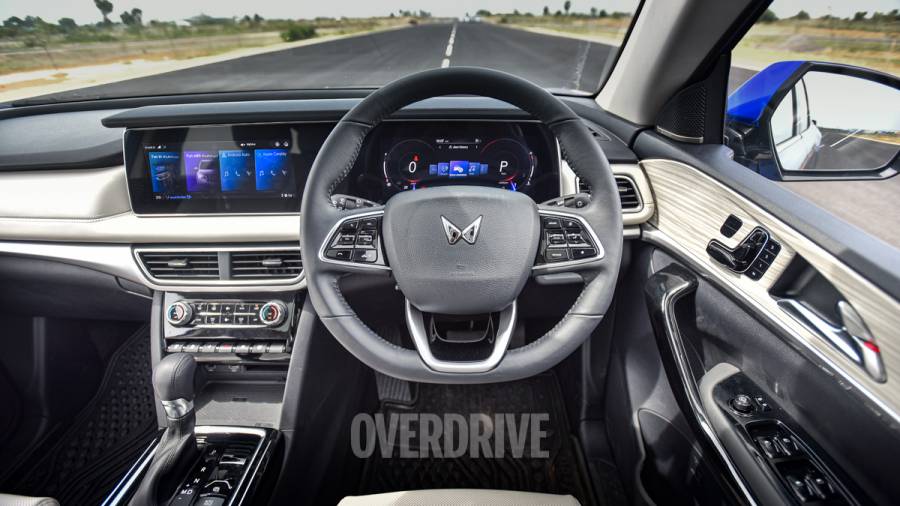
Right behind the steering wheel, you get a digital touchscreen that is similar to what Mercedes-Benz employs in their cars. It's a single slab housed behind shatterproof Gorilla glass, split into two sections, one screen that displays all the infotainment functions and the second is the instrumentation. The latter has multiple displays for tacho and speedo functions and while readability is good, it could have looked better.

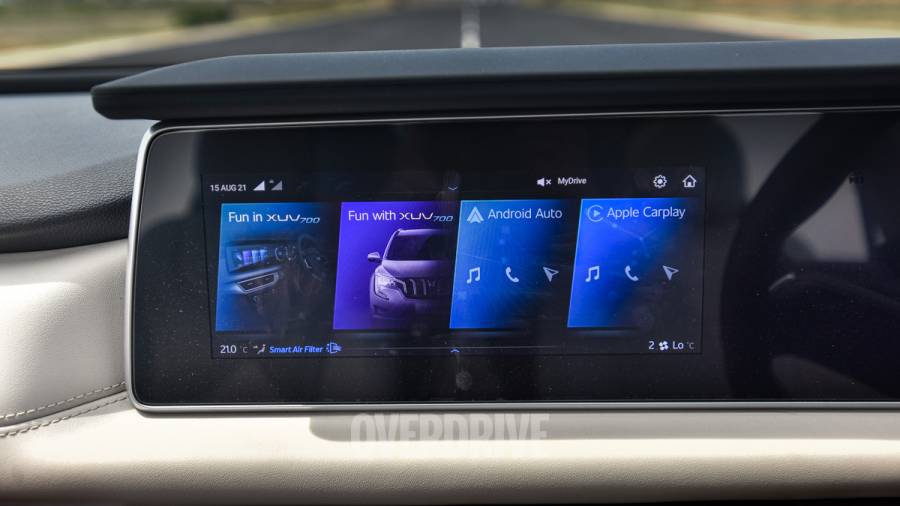
On the main display, you get the intelligent connected technology suite that goes under the pseudonym Adrenox. It has over 60 built-in features that allow you to control infotainment, and offline vehicle control. Rich it may be in sheer content terms, but the interface leaves a lot to be desired as of now. Accessing certain features requires you to dive very, very deep inside the system. And since you can't have simple iconography to depict every function, Mahindra has to resort to using a lot of text as well. So reading through the various menus and then memorising where each function resides, the many steps required to get to it, is a bit tedious. This is a growing concern, as more and more tech is injected into cars, the systems get more complicated. It's a similar problem to what I saw in the MG Hector. Sadly there just isn't a one-step solution to make this simpler and less distracting. Also, voice commands have not grown so intelligent to allow you control over all these functions, yet.
Our system had a few glitches, which Mahindra has assured us would be ironed out by the time the XUV700 is ready to be delivered to consumers. The cars we drove were all pre-production versions so not everything was entirely in place.
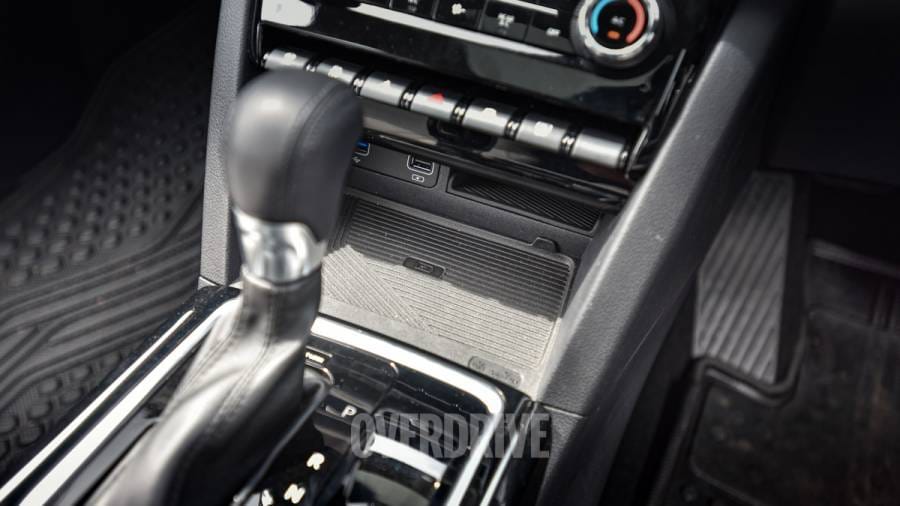
I'm also quite glad Mahindra have still left buttons and a control dial that allows you to control primary functions, like audio selection, drive mode selectors etc. The feel of those buttons retains, for me, a comfortable space where you can precisely identify what you intend to do. It also adds that sense of security where you don't have to take your eyes off the road to look at the screen and execute a function. I like buttons, and the ones Mahindra use in the XUV700 are tactile, look polished and feel upmarket.
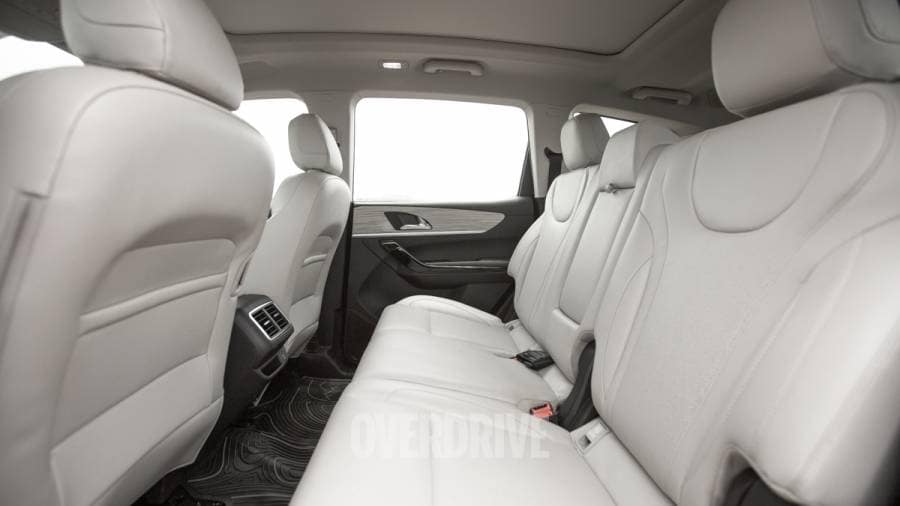
2021 Mahindra XUV700: Space Management
This is one area where Mahindra hasn't scrimped on. The front of the cabin is massive, and both the driver and passenger seats are magnanimous. They are also well-bolstered, so long journeys or short ones won't be exhausting. The middle row is also generously endowed, you have enough room for three passengers on the middle bench. Mahindra has also made provision for the rear seat passenger to slide the front passenger seat ahead using a small lever. You can also accommodate 2 older kids in the third row quite easily with enough room for them as well as ventilation facilities thrown in to keep the space cool.
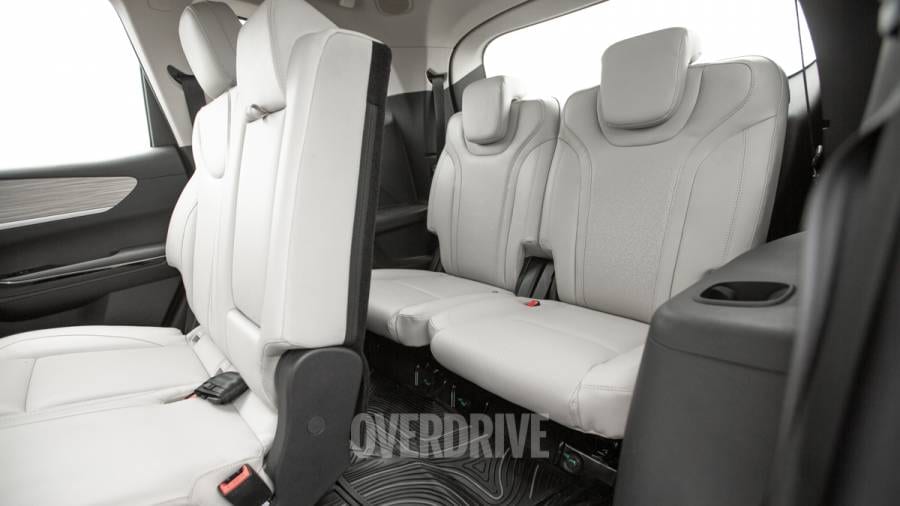
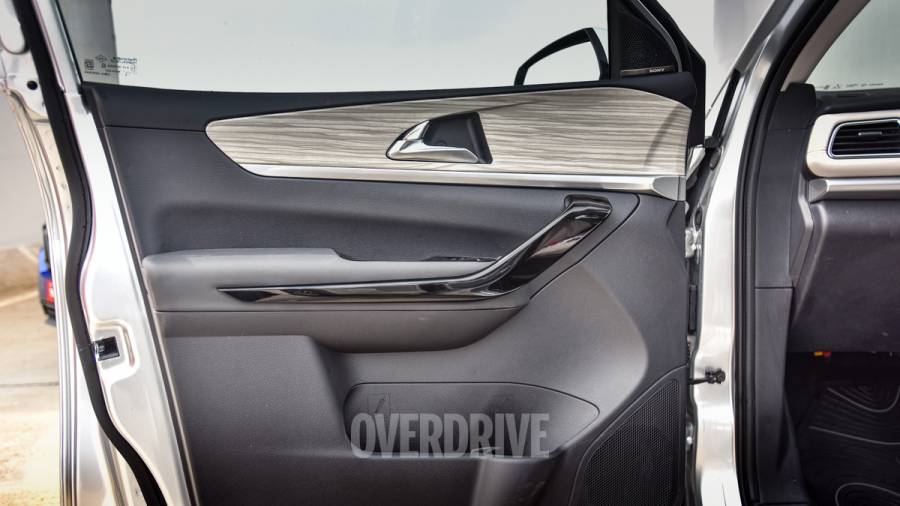
With the third-row seats folded down flat, the boot space is enormous, fold down the second row as well and you could place a king-sized bed in that 1,205 litre boot. With the third row up you still, get over 200 litres of boot space which is good enough for a weekend sojourn.
What I also like is the way space is managed overall. There are enough storage bins everywhere, the one under the armrest is even cooled which makes it a great place to stow away small bottles for a hot day. The wireless charging pad is equally large with enough space to slot in two phones comfortably with additional fast-charging USB connectors as well as Type-C connectors for the rear passengers. The door pockets hold large bottles and there is space to slide in a small umbrella for rainy days too. You can clearly see there is a lot of thought gone into managing the vacant spaces optimally.

2021 Mahindra XUV700: Design and styling
The XUV700 has got immense presence, it easily attracts attention, thanks to its poise and that well-proportioned grille! On the road, it has an impressive character, rolling around at any speed with a confident gait, throwing large shadows over most other vehicles it shares road space with. There is a hint of the XUV500 in its exterior design, but put that down to Mahindra wanting to retain a little bit of the original DNA.

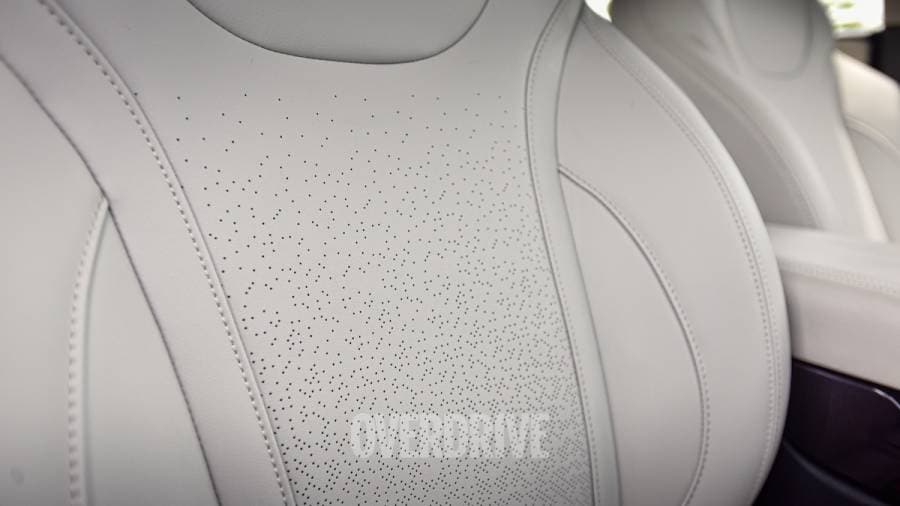
Inside the cabin, the space catches your attention first and then it's the light coloured upholstery adding volume to the space. I'm not sure if this white-ish upholstery is catching on, since we also saw a similar shade on the Tata Safari. The seats appear comfortable, and I loved the exposed stitch you see on the dashboard and the perforated seats that scream plush leather! Visually this cabin looks like a place you would have no qualms with when you have to spend a few or many hours on the road. Though I must add, the one panel on the door that is plastic but looks like wood, should be done away with and replaced with leather. It would significantly elevate the mood in the cabin.
One aspect that I believe needs attention though are the doors, almost every door needed a firm hand to close it, else the warning signals on the dashboard would flare up, especially the boot.
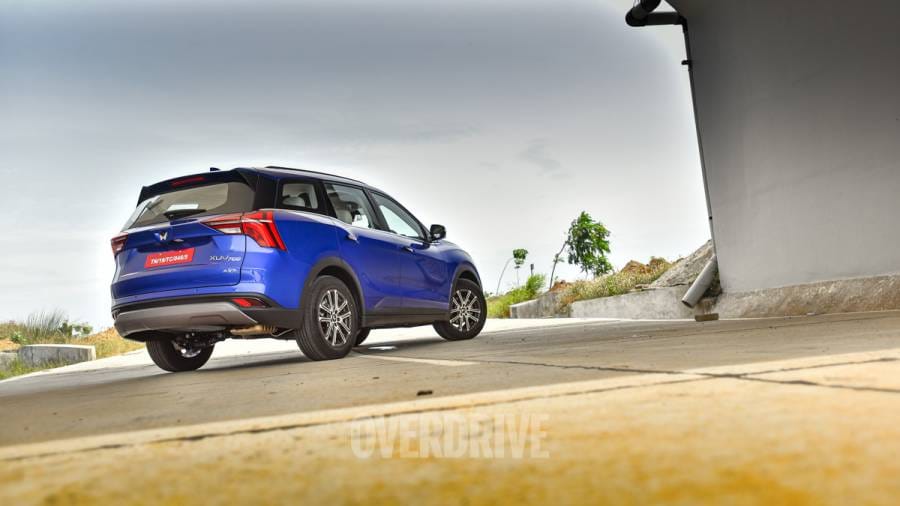
2021 Mahindra XUV700: At the end
The XUV700 clearly shows that Mahindra has made major strides in every aspect of car making, be it engineering, design, style, value and what have you. First with the Thar and now with the XUV700, Mahindra is definitely bringing a newfound excitement to the market. You couldn't ask for more at these prices. I'm now keen to see what the next few vehicles are like. But before you go and buy yourself the XUV700, I'd recommend you buy some shares, this company is going places!
The writer of this story can be reached @BertrandGDsouza on Twitter and @bertdsouza14 on Instagram
Also read,
2021 Mahindra XUV700 prices revealed, base MX petrol to start from Rs 11.99 lakh
2021 Mahindra XUV700 India unveil: Everything you need to know
Mahindra XUV700 MX vs AX variants: What's different?
Mahindra XUV700 vs Hyundai Alcazar vs Tata Safari vs MG Hector Plus: Engine specifications compared
Mahindra opens 454-acre proving grounds alongside XUV700 unveil
5-door Thar, all-new Bolero among 9 new Mahindra SUVs coming by 2026
Starts Rs 11.99 Lakhs
1949cc
Manual
155
380
-NA-
Starts Rs 16.3 Lakhs
1493cc
Automatic
115
250
-NA-
Starts Rs 12.9 Lakhs
1496cc
Manual
143
250
15.8 Kmpl
Starts Rs 14.99 Lakhs
1956cc
Automatic
170
350
-NA-


